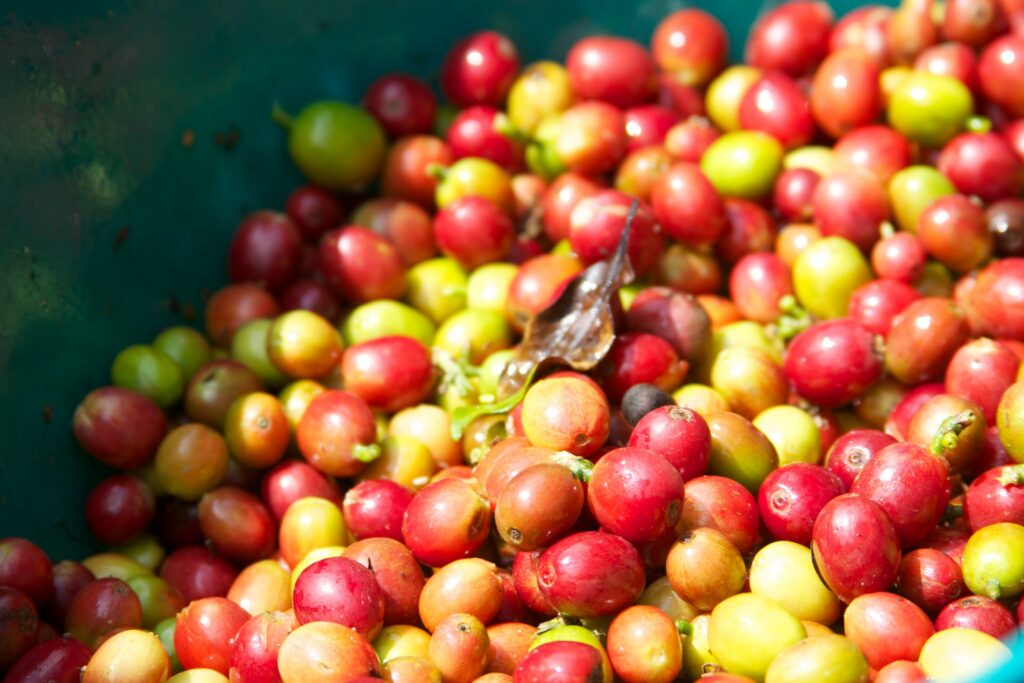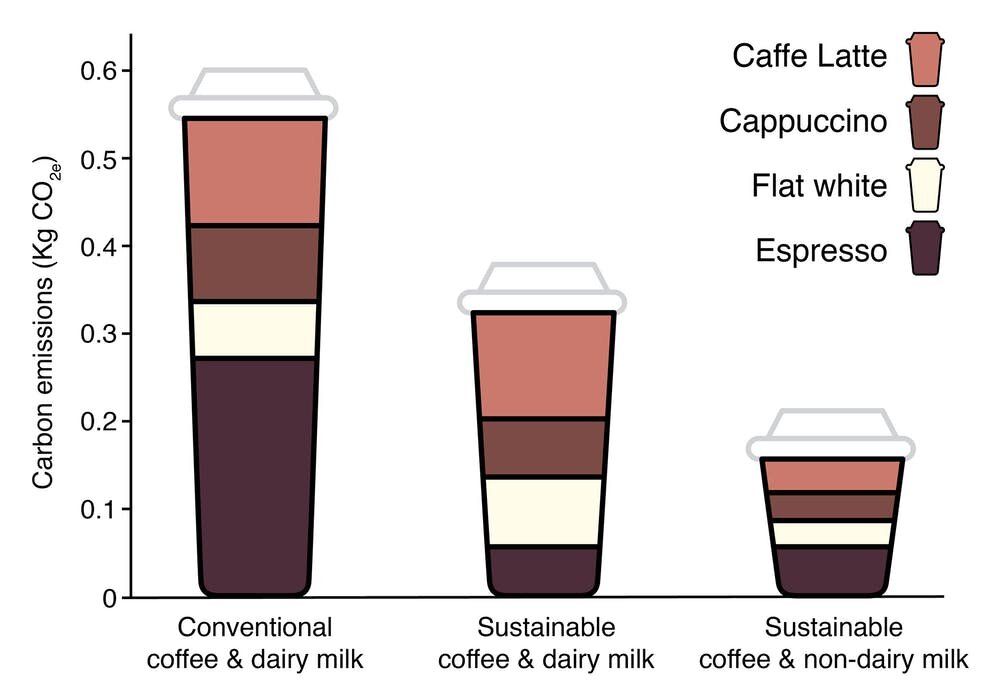Coffee, our essential ally for many rough mornings, has a hidden environmental cost that is contributing to the world’s climate crisis, a new study showed. Still, there are plenty of ways to address this challenge that could bring coffee’s emissions down up to 77%, from shipping the beans with cargo ships to using more renewable energy in the process.

Grown in tropical regions with fragile ecosystems, coffee is one of the most traded products in the world. Over 9.5 billion kilograms are produced every year, with a trade value of more than $30 billion. Demand is expected to triple by 2050, which has accelerated sustainability initiatives among coffee producers.
Conventional coffee production uses substantial amounts of energy, water, and land, which can have potentially significant impacts on biodiversity. This is mainly due to the long supply chain required to produce and transport the coffee bean to the market. The EU and the US import two-third of the coffee produced worldwide.
Although there has been substantial research into the environmental impacts of coffee production, it has primarily focused on the production phase. Significantly less consideration has been given to the environmental cost of coffee processing, including transportation from the production to consumption countries.
In a recent effort, UK researchers Carmen Nab and Mark Maslin calculated and compared the carbon footprints of conventional and sustainable Arabica coffee, the beans baristas use to make a high-quality brew, from leading producers Brazil and Vietnam. Together, both countries produce over 50% of the world’s Arabica coffee.
Conventional coffee from Vietnam was calculated to have the highest carbon footprint, with 16.04 kilogram of carbon dioxide (CO2) emissions per kilogram of coffee, closely followed by the one produced in Brazil (14.61 kilograms of CO2). Meanwhile, emissions from sustainable coffee were much lower in both cases, averaging 3.40 kilogram.

The exportation and transport process produced over 70% of total CO2 emissions in conventional coffee from both countries. The processing phase was the second-largest source of emissions (19%–21%) followed by the growing (7%) and milling (1%) phases. In the case of sustainable coffee, the processing phase was the largest source of emissions.
The researchers also calculated that just one espresso has an average carbon footprint of about 0.28 kilogram of CO2 emissions. And the figure grows significantly if the coffee has milk. Lattes have a carbon footprint of about 0.55 kg, followed by cappuccinos on 0.41 kg and flat whites on 0.34 kg, they estimated.
“Weight for weight, the coffee produced by the least sustainable means generates as much carbon dioxide as cheese and has a carbon footprint only half that of one of the worst offenders—beef. And that’s all before adding milk, which carries its own hefty environmental baggage,” Nab and Masling wrote in a blog post.
The sustainable case studies quantified in this study had an estimated 77% lower carbon footprint than the conventional case studies. The use of cargo ships for the transportation of coffee beans reduced emissions significatively, as it can export larger shipments at once. The replacement of chemical fertilizers with organic waste also played a big role.
But there are many other things that coffee producers could incorporate and reduce their emissions even further, the researchers argued:
- Use of recycled materials and reduction of packaging amount. This reduces the demand for primary materials, thus reducing energy, water, and material consumption, air and water emissions in the production of packaging materials, and impacts on biodiversity from forestry and mining
- Increasing efficiency in water heating. In the processing phase, an estimated 70% of CO2 emissions were attributed to consumption, largely due to the significant energy use of automatic coffee machines. This energy use could be reduced by using more efficient water-using technologies.
- Use of renewable energy sources. The use of fossil fuels for electricity and energy production releases significant air emissions during each phase of the coffee life cycle. The use of renewable energy sources can reduce the carbon footprint of crop production by up to 70%.
- Roasting the coffee beans in the producing country. Currently, coffee is usually exported to the country of consumption before it is roasted, allowing retailers to market their coffee as “freshly roasted.” Whilst green coffee beans have a longer shelf life than roasted ones, roasted coffee beans can retain their fresh taste for up to six months if stored at a cool temperature.
The study was published in the journal Royal Geographical Society.


